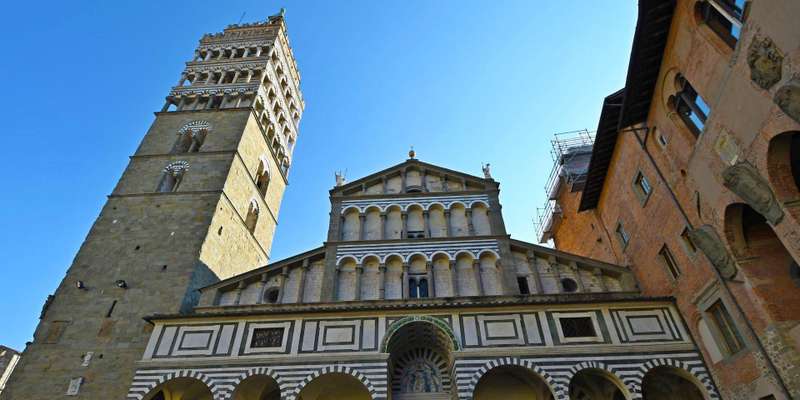- Home
- Useful Tips
- Pistoia's ceramic tradition:...
Pistoia's centuries-old ceramic tradition remains one of Tuscany's best-kept secrets, yet most visitors miss its authentic workshops while rushing to Florence. Over 78% of day-trippers bypass local artisans entirely, unaware they're passing within meters of studios producing UNESCO-recognized craftsmanship. The frustration compounds when travelers later discover mass-produced imitations sold as 'authentic Tuscan pottery' elsewhere. This isn't just about missing shopping opportunities – it's about failing to connect with a living tradition where fifth-generation maestri still shape clay using medieval techniques. The time pressure of Italian itineraries means you might settle for generic souvenirs rather than witnessing the hypnotic precision of a tornio manuale (foot-powered wheel) in action. Without local guidance, even ceramic enthusiasts risk overlooking the subtle differences between Pistoia's distinctive verde (green) glaze and cheaper industrial replicas.


How to spot authentic Pistoia ceramics versus tourist traps
Authentic Pistoia ceramics carry distinct hallmarks invisible to untrained eyes. Local artisans use a specific type of red clay sourced from the nearby Montalbano hills, giving pieces a characteristic warm undertone beneath the glaze. Genuine works will have slight imperfections in the painted motifs – these aren't flaws but proof of handcrafting, unlike machine-perfect factory products. Look for the 'Ceramica Artistica e Tradizionale' label, a government certification only awarded to workshops maintaining historical methods. The backstamps often include the artisan's initials and Pistoia's coordinates (43°56'N). Beware of vendors near major attractions claiming 'local' status; true Pistoiese ceramics rarely appear in generic souvenir shops. Instead, visit Via della Madonna where generations of ceramists have clustered since the 1300s. Here, you can watch artists apply the iconic ramina green glaze using Renaissance-era formulas involving copper oxide and ash.
Three family-run workshops that welcome visitors
The Botarelli family has operated their tiny bottega near Sant'Andrea Church since 1923, where octogenarian Giorgio still demonstrates the rare spolvero stencil technique. Unlike commercial showrooms, their workshop lets you observe the entire process from clay wedging to wood-fired kilns. For contemporary twists on tradition, Ceramiche Artistiche Mariani employs a sixth-generation maestro who developed a revolutionary lead-free glaze. Their guided tours include a mini-workshop where you can imprint your fingerprint into raw clay as a personalized keepsake. More adventurous visitors should seek out Laboratorio Ceramica di Via del Lastrone, where fiery-tempered artist Paola teaches how to identify 15th-century ceramic fragments still unearthed in local gardens. These experiences require no bookings or fees – simply knock and ask 'Posso vedere come lavorate?' (May I watch you work?). Most artisans pause gladly, especially if you visit mid-morning when they're typically decorating bisque-fired pieces.
Where to take hands-on pottery classes without the crowds
Pistoia's municipal arts center offers affordable two-hour workshops using the same equipment as master ceramists. Their Wednesday morning sessions focus on traditional sgraffito etching, while Fridays explore medieval maiolica painting techniques. For deeper immersion, Fattoria di Casignano combines pottery with agriturismo stays, teaching rural Tuscan methods like pit-firing with olive wood. Their family package includes harvesting local clay from stream beds – a unique experience Florence tours can't replicate. Budget-conscious travelers should time visits with the monthly Open Fornaci event, when normally private kilns across the province welcome public participation. In nearby Montelupo Fiorentino, the International Ceramics Museum hosts free weekend demonstrations by Pistoia-based artisans. Remember, authentic classes emphasize process over perfection; don't expect to craft masterpiece vases instantly. The true value lies in getting clay under your nails while learning why Pistoia's earth produces Italy's most malleable terracotta.
Insider tips for transporting fragile ceramics home safely
Seasoned collectors know Pistoia's artisans provide superior packaging unseen in retail stores. After purchasing, request 'imballaggio professionale' – artisans will cushion pieces in hand-shredded hemp fibers (a local byproduct of rope-making traditions) before boxing them in triple-layer cartons. Many workshops keep discarded leather scraps from nearby tanneries to wrap particularly delicate items. For larger commissions, ask about the 'spedizione con cocci' method: surrounding new pieces with fragments of broken antiques as shock-absorbing material. Some studios even include a handwritten note detailing the clay's provenance and firing temperature for customs declarations. If flying, carry smaller items in your cabin luggage wrapped in woolen socks – the natural lanolin provides moisture protection. Surprisingly, Pistoia's post office (Via Crispi 32) specializes in international ceramic shipments, offering discounted rates for UNESCO-listed handicrafts. Their staff trains annually with ceramicists to handle parcels correctly, a service unknown even to most Italians.
